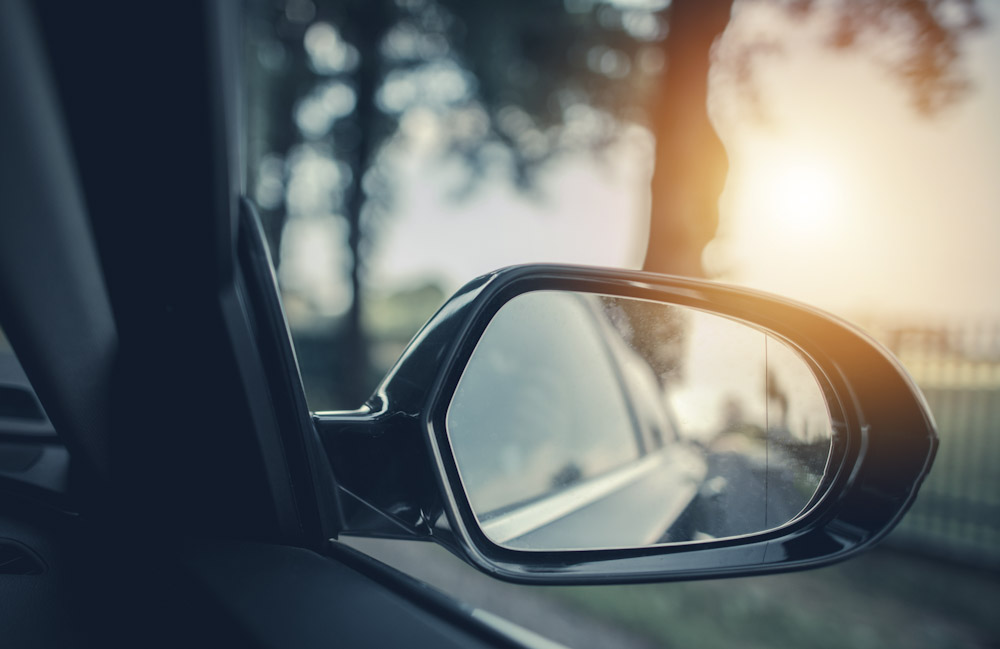
Did you know the number one cause of car accidents is distracted driving? We all know we shouldn’t be using mobile devices, applying makeup, or eating while driving. But what other driving tips can we follow for safer roads?
Safety Begins with Me
For Ogden car repair, you rely on the team at Master Muffler. For safer roads, rely on yourself.
Check Blind Spots
With more cameras in and on cars than ever before, it’s easy to know if someone is behind you or in your blind spot. Make it a habit to not only physically turn your head to look around when reversing or changing lanes, but glance at what your cameras are reporting as well.
Many newer cars also have lane-change assist, alerting you as the driver when there is something in your blind spot as you attempt to change lanes. Some cars also feature alerts for when you’re following too closely behind another car, potentially putting yourself in their blind spot. Remember the number one rule when it comes to other drivers: If you can’t see them behind the wheel, they can’t see you in your vehicle. Avoid needing to schedule Ogden car repairs by always checking your blind spot before maneuvering your vehicle.
Avoid Aggressive Driving
Speeding, aggressive acceleration, and sudden braking can all add up to unsafe driving conditions for yourself and others. When you drive contrary to what the conditions suggest, you put yourself at risk of causing an accident. It’s better to be a few minutes late to your next appointment than to be indefinitely delayed due to an accident, whether fatal or not.
It’s safe practice to follow no closer than two seconds behind another vehicle in ideal conditions; four seconds in inclement weather.
Drive Defensively
We don’t suggest driving as if everyone else on the road is out to get you, but it is helpful to be prepared for anything. Driving defensively means you’re ready to quickly change lanes if the car next to you unexpectedly swerves, you have enough space between yourself and another vehicle to brake suddenly if need be, or you see cars approaching the Interstate who’ll need to merge in front of you so you slow down.
Follow Road Signs
No, we’re not talking about navigation; following road signs means slowing down when instructed, minding curvy roads, and paying attention to lane-change rules. Speed limits are posted for your safety and the safety of the people and creatures along the road.
Move Over Promptly
Whether you’re being pulled over, passing someone else who is, or you see flashing lights in your rearview mirror, move over promptly. In the event you’re being signaled by law enforcement, pull over to the right side of the road. Likewise, in the event you see an emergency response vehicle approaching behind you, pull over to let them pass, or remain stopped at an intersection. As a courtesy, if you approach vehicles on the side of the road, try giving a wide berth by moving to the left if possible.
Speaking of the left; make it a habit to only use the left lane for passing. After you’ve moved beyond a slower vehicle, you can help the flow of traffic by moving back over to the right lane(s) when there’s an opening for you. Some states have laws about passing, and you can be ticketed for failure to do so properly.
Built in Breaks
It’s easy to get distracted on long drives, so it’s important to factor in time to get out of the car and stretch your legs on a road trip. Don’t rely on caffeine, cold air, or loud music to keep you alert behind the wheel.
Tie it Down
How many times have you happened upon debris in the road? From tires and trash to ladders and lawn chairs, sometimes cargo isn’t tied down or secured properly. Whether you’re going around the block or driving across the country, make surer all your belongings are secure. The Federal Motor Carrier Safety Administration (FMCSA) requires that tie-downs (straps) be secured to anchor points on the vehicle, and they must go side-to-side, front to back, and/or vertically.
Also, when securing your cargo, the tie-downs should not touch the tires and anything protruding four feet or more over the fender or bumper must be marked with a flag for visibility.
Buckle Up
We wish it didn’t have to be said, but you should always buckle up when driving. All passengers should also be securely buckled in age-appropriate restraints as well. The National Highway Transportation Safety Administration reports that national seatbelt use hovers around 90%, and 47% of passengers who were killed in collisions were not wearing their seatbelts. Seatbelts save lives, so be sure they’re automatically buckled every time you get into your vehicle.
Ogden car repair experts at Master Muffler can help you keep your car in tip-top shape for safe driving. If you need a tune-up, an alignment, or even just an oil change, contact us HERE today.
Related Posts
When you think about car maintenance, you probably focus on oil changes, tire rotations, and maybe even brake pad replacement. But what about your brake fluid? If you’ve ever wondered, “What does brake fluid do?” or “Why is brake fluid important?”, you’re not alone. Brake fluid might not be the most talked-about part of [...]
Is that high-pitched squeal from your brakes driving you—and everyone else—crazy? Don’t ignore it. Squeaky brakes aren’t just annoying, they’re your car’s way of saying something needs attention. Whether you're cruising through Salt Lake City or winding up Idaho’s mountain passes, here’s what’s likely going on, how you can fix it, and when it [...]
Whether you’re cruising down I-15 toward Zion, exploring the scenic routes of Eastern Oregon, or heading north to catch the Tetons in Idaho, a smooth summer road trip starts with smart car maintenance. Before you pack the snacks and load up the playlist, it’s worth taking the time to make sure your vehicle is [...]





